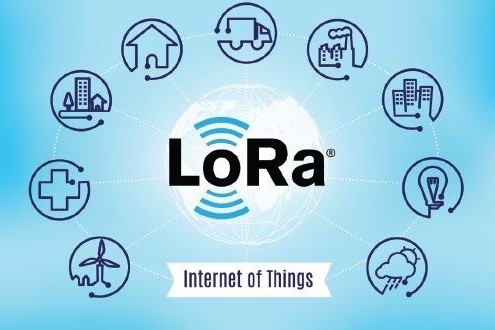LoRa: The Future Of Electronics And IoT?


Brooding over the inefficacies of current technology, is what engenders newer technology thus enabling humans to develop and interact with novel technologies. Such an inadequacy was observed with tech which involved high power consumption to transmit data over longer ranges; that and reduced scalability along with a myriad of Gordian knots to boot render WiFi and Bluetooth technologies useless when faced with the challenge to transmit without any hassle in remote and unfavorable conditions regardless of the range in question. This conundrum commenced the research for an answer to overcome the setback of losing data transmission over extended ranges. Cycleo, a company founded by Nicolas Sornin, Olivier Seller and François Sforza in 2009 aimed at developing a long range, low power modulation technology which was accomplished using the Chirp Spread Spectrum(CSS) modulation technology, a technology widely in use for sonar in the maritime industry and radar in aviation. Persuaded by the effectiveness of this technology, Semtech (a corporation which is a high-performance semiconductor, IoT systems and Cloud connectivity service provider) acquired Cycleo in 2012 to facilitate a conjoined effort for developing the existing CSS technology to provide the world of electronics with something which would prove itself as a boon to its existence, the LoRa technology.

LoRa, essentially an acronym is formed by the initials of the service it's so
renowned to provide, without any consequential expenditure of power; Long Range. But why
is Lora is creating a buzz amongst IoT enthusiasts? Why is it turning so many technophilic
heads? Why have the number of public LoRaWAN (Low power, high Range, wide area
networks)which are available globally, grown by 66% over the past three years? Why are the
installed bases of LPWAN (low power wide area network) devices estimated to exceed 2
billion units in 2025? The answer apart from the apparently obvious subject of long range as
worded out eloquently in the earlier section of this disquisition, discusses many advantages
of LoRa over its counterparts which almost sound and seem like hyperbole. LoRa transmits
over license-free megahertz radio frequency bands: 169 MHz, 433 MHz (Asia), 868 MHz
(Europe) and 915 MHz (North America) which are much lower than the popular 2,4 GHz and
5 GHz, resulting in lower transmission losses and much better penetration through obstacles
such as building walls or trees. An alternative WAN technology, SigFox cuts in a very close
second in the race of preferred long range(kilometers rather than metres) IoT devices after
LoRa. In terms of distance, Sigfox has more extended range capabilities but Sigfox is not the
best solution as it can send but not receive back much information while the rest allow for a
substantial amount of to and fro data. Adaptability works as a charm with LoRa as LoRa
technology is designed to be flexible and scalable, allowing it to adapt to various
applications and environments thus supporting a large number of devices, making it ideal
for applications that require many connected devices. Another advantage that it has under
its belt is the use of error-correcting codes to ensure the integrity of data transmission and
reception. Listing down all the applications of LoRa technology might prove to be a tedious
job to undertake but some of them are inclusive of streetlighting, waste management, smart
energy metering, asset management etc. It’s not wanting in attention when it comes to the
domains of agriculture, smart city planning and industrial works which can exploit the
resourcefulness of this cutting-edge technology. A healthy employment of LoRa connected
solutions can wirelessly measure usage data and trends in dense urban environments,
indoors and even underground thus enabling predictive analytics to identify infrastructure
issues before they are set up for failure. A propitious response and a favorable reception of
this technology even in the early stages of its development can’t help but make us see the
potential of LoRa in a very sanguine light. Once it’s full potential is realized in terms of
pragmatic real world applications, LoRa could become one of the fastest growing
technologies of this modern age with the cohesive effort to eliminate any redundancies
complemented with the rigorous optimization of this robust technology.
The near future of humanity will see a monopoly of internet driven gizmos to comfort
our lifestyles, and if this is to happen, LoRa will prove to be a deciding chapter in the
proverbial book of Internet of Things. Even though LoRaWAN clearly has restrictions in terms
of a downlink transmission, transmission intervals, latency, and bandwidth, these were
required tradeoffs in order to achieve long-range and low-power, tradeoffs which were
certainly worth the expense.